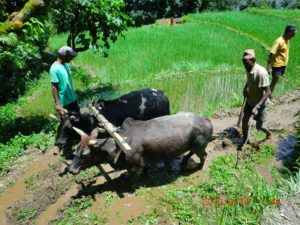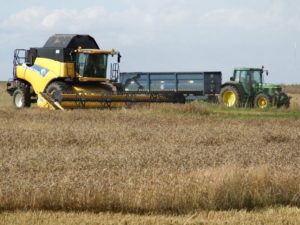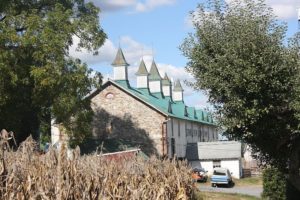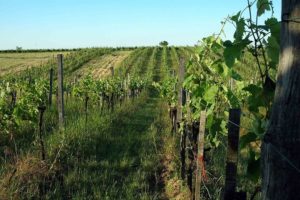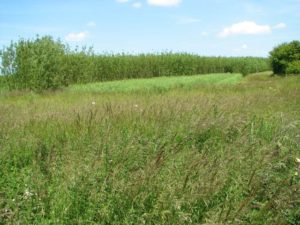Summary
- Agriculture has changed over the years since its inception.
- Modern agriculture is way better than traditional agriculture in many ways, including increased productivity.
- Improved technology, better equipment and housing, different ways of rearing animals and biotechnology are driving agricultural change.
- The future of agricultural change is bright with technology expected to drive the industry further to a completely new level.
- Organic farming is an important part of agricultural change today.
Agricultural change involves all the changes a farmer makes to existing farming practices. For instance, a farmer might change from using conventional farming techniques to organic farming practices. Similarly, a farmer might change from ploughing his land and harrowing it to adopting no till farming techniques. Agricultural change can occur in many other ways.
A Comparison of Traditional and Modern Agriculture
Agriculture has changed over the years. The world’s population is about 7.3 billion and the figure is expected to hit 8.5 billion and 9.7 billion by 2030 and 2050, respectively. That translates to high demand for food and thus increased consumption. With agricultural change and advancement in farming systems, the world can provide enough, safe and nutritious food to feed its growing population.
More than two centuries ago, about 90% of America’s population lived on rural farms and cultivated their own food for consumption. However, today, only 2% of the U.S population live in farms, producing food for global consumption. It is a significant change in the number of people directly involved in food production to ensure that everybody has food to eat.
- Improved Technology
Farmers adopt technology to advance food production to ensure there is enough food to feed the world’s fast-growing population. In comparison to 1940 when a farmer was able to feed 19 people only, a modern farmer using technology can feed about 155 people. Technologies such as modified animal housing, motorized equipment and biotechnology help farmers enhance agriculture.
With improved technology, farmers are able to produce more food and feed more people. Moreover, technology also allows farmers to use less manpower for food production.
- Better Equipment
The use of modern equipment has largely impacted agriculture in the way farmers grow food. Traditionally, manual labor was used with the help of farm animals such as horses and donkeys to draw farm equipment. Manual labor was time-consuming, meaning farmers could only work on small pieces of land. The animals used were slow and would easily get tired. Therefore, they needed time off work to rest and recover.
On the converse, farmers today use motorized equipment and tractors to do farm work. Combines, tractors and plows, among other modern farm machinery are larger and faster than the animals used in the past to do farm work. Therefore, farmers are equipped to produce more food within shorter durations. However, the machinery require care because they can easily break down. But, unlike animals, they do not require recovery time and thus can operate for prolonged periods.
- How Farm Animals are Raised and their Housing
Animal housing and how they are reared have also changed over the years. Scientists have found better, more comfortable housing for farm animals. For instance, dairy animals live in barns fitted with sand beds, mattresses or even water beds. Nutritionists also make sure that animals have access to special fans, diets and sprinklers to improve their living conditions in hot temperatures. Comfortable and healthy animals are able to produce higher milk yield for the farmers.
In the U.S, pigs are increasingly housed indoors and that has seen a decrease in Trichinosis among the pig population. The disease was rampant in wild boars and could easily spread to domesticated pigs if contact was made. Confinement of pigs in houses today has decreased transmission of the disease as was in the past. Whereas 400 cases of the disease were reported in the 1940s, only 15 were registered in 2012 in the U.S.
Biotechnology for Improved Crop Production
Biotechnology involves the manipulation of living organisms in animal and crop production to improve the quality of human life. Genetic engineering and biotechnology have fostered developments in seed technology. Historically, harsh weather conditions led to destruction of crop harvests. However, today scientists modify seeds to alter crop yield.
Continuous improvement in technology allows modern farmers to engage in sustainable farming and agricultural practices such as preservation, conservation and moderation. They reduce environmental impact while increasing farm yield.
Despite the significant agricultural change over the years, most farms worldwide are family-owned just as they were centuries ago. Farmers work hard to ensure that populations worldwide have access to healthy and affordable food to put on their tables.
The Future of Agricultural Change
Agriculture continues to change, becoming more efficient and scientific. Growing seasons are becoming longer and requirements for environmental and animal welfare increasing. Regulatory processes, trading conditions, consumers and market requirements will drive the future of agriculture. The availability of sustainable goods market will drive the productivity of farms.
Participation in national and global markets continue to force farmers to adopt efficient farm practices such as the types of livestock they rear and how crops are grown. Prices paid and cost base such as feeds, fuel and welfare requirements drive farm profits. Prices paid is directly proportional to a country’s national agricultural output. Diseases and climate change can also affect agricultural productivity.
The future will see the following:
- More efficient livestock installation for indoor/outdoor intensive rearing of animals to meet changing regulations
- Replacement or re-use of old buildings
- More efficient local energy production through renewables
- Production of a wide range of crops including bio-fuel crops
- Use of technology to regulate crops in the field and storage
- Diversification of farming activities to increase local food production
- Continued use of polytunnels to prolong food production
Solutions to Improve Food Supply over the Years
- The Green Revolution
- The European Union and the Common Agricultural Policy (CAP)
- National Farmers Unions
- Farm Diversification
Technology will continue to drive agriculture to increase food production and meet the world’s increasing demand for food consumption. Agricultural change is expected to continue improving farming practices and techniques to enable farmers increase crop yield and thus profits
Frequently Asked Questions
What factors drive agricultural change, including technological advancements, shifts in consumer preferences, and global market forces, and how do they influence farming practices?
Agricultural change is propelled by innovations, changing consumer demands, and international trade dynamics, impacting crop choices and farming methods.
Explain the Green Revolution and its impact on agricultural productivity, including the adoption of high-yielding crop varieties, irrigation, and chemical fertilizers.
The Green Revolution increased crop yields but raised concerns about resource use, environmental impacts, and social equity.
Sustainable agriculture aims to balance productivity with conservation, employing practices like crop rotation, organic farming, and reduced pesticide use.
Discuss the role of genetically modified organisms (GMOs) in agriculture, including their potential benefits, controversies, and regulatory considerations.
GMOs offer potential advantages like pest resistance and increased yields but raise concerns about safety, environmental impacts, and labeling.
How do global trade agreements and policies impact agricultural practices and food systems, and what are the implications for small-scale farmers and food security?
Trade policies can influence market access, pricing, and competition, affecting small-scale farmers and food availability. Considerations include equity and rural development.
References
- Astill, G., & Langdon, J. (1997). Medieval farming and technology: : the impact of agricultural change in Northwest Europe. Leiden: Brill.
- Sharrer, G. T. (2002). Kind of fate: Agricultural change in virginia, 1861-1920. Place of publication not identified: Purdue University Press.
- Grigg, D. (1982). The dynamics of agricultural change: The historical experience. London: Hutchinson.
- Marston, J. M. (2017). Agricultural sustainability and environmental change at ancientGordion.
Image sources:
- Traditional Rice Farming in India – Bishnu35, Dhital-agri, CC BY-SA 3.0
- A Tractor Ploughing a Farm – abhiriksh, Tractor ploughing farm 2, CC BY-SA 3.0
- Combine Harvesting – Dave Hitchborne, Combine Harvesting at Capnil Farms, Old Woodhall – geograph.org.uk – 559012, CC BY-SA 2.0
- Grand Dairy Farm Barn – Shuvaev, Grand View Dairy Farm Barn 01, CC BY-SA 3.0
- Organic Sustainable Vineyard Farming – Verita, Organic-Vineyard-Austria-Neusiedlersee, CC BY 3.0
- Biofuel Crop Production – Evelyn Simak, Willows – a crop of the future – geograph.org.uk – 1355896, CC BY-SA 2.0






